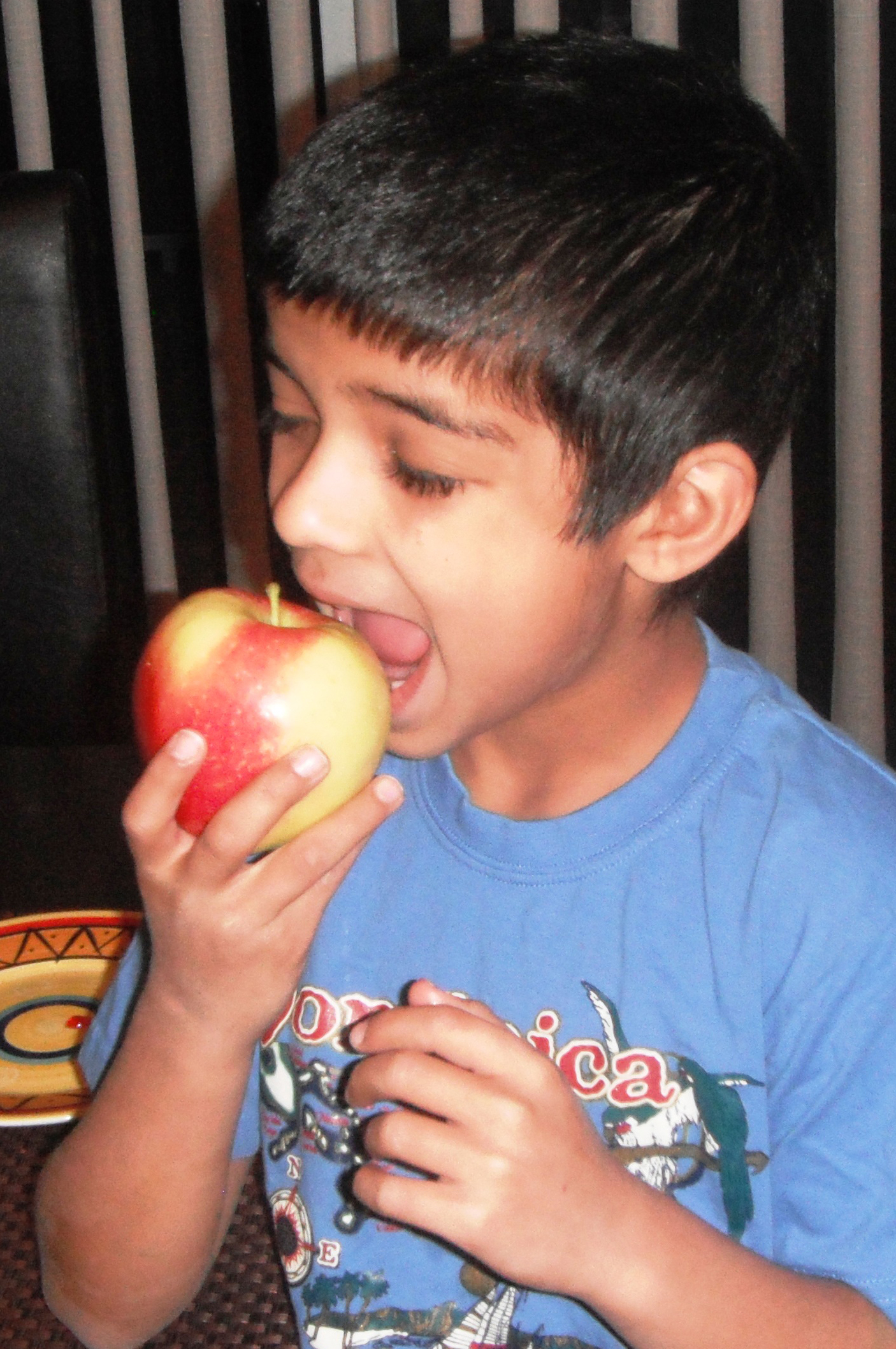This article is part of a series by the Ismaili Nutrition Centre that examines evidence-based studies published in scientific journals, and distills what they mean to our readers.
 Children, like adults, should be eating at least five servings of vegetables and fruits daily. Fayaz Chunara
Children, like adults, should be eating at least five servings of vegetables and fruits daily. Fayaz ChunaraFew children are born with a liking for every vegetable, but researchers in France and Switzerland wanted to know if infants could learn to enjoy a specific vegetable, and how many tastes it would take. They published their results in the Journal of Food Quality and Preference in April 2007.
The researchers found 49 mothers who had stopped offering a vegetable because their child refused it. The mothers were asked to give the disliked vegetable and a well-liked one (ex. carrot puree) on alternate days, so that the infant would eat the disliked vegetable only once every two days.
Initially, the infants only ate 39 grams of the disliked vegetable compared to 164 grams of the liked food, but this changed very quickly. By the eighth exposure, infants were eating 174 grams of the initially disliked vegetable! The effects were long-lasting, with two out of three infants still eating the initially disliked vegetable nine months later.
A more recent Belgian study published in the journal Appetite in December 2010, looked at 755 families to see the effects of parenting styles (laxness, over-reactivity, etc.) and children's personalities (shyness, stubbornness, etc.) on fruit and vegetable eating habits. Although no parenting style or child personality trait was seen to make a big difference, the study made two important observations: first, parents who ate more fruits and vegetables had kids who ate more fruits and vegetables. Second, kids ate more fruits and vegetables when parents tended to use child-centered techniques such as reasoning, offering choices, and praising, rather than parent-centered techniques such as warning or physical struggling.
What this means for you
Children, like adults, should be eating at least five servings of vegetables and fruits daily. When it comes to infants or toddlers, it may take more than 10 attempts to get the child to try something new, so don't give up as it takes time to get used to flavours, textures and consistency of food.
It's okay if your child refuses to eat one or two items, but parents have to just let it go and focus on encouraging kids to try new flavours and increase the variety of vegetables and fruits eaten in the home. Each meal should have at least 1-2 fruits or veggies.
Start with sliced fruit with cereal in the morning, coloured pepper strips in their lunch or sweet potatoes at dinner and frozen berries or sliced mangos as a dessert. Get kids involved in the kitchen and at the grocery store, and soon they will be more excited about trying more vegetables and fruits, just like their parents.
References
- Maier, A., et al., Effects of repeated exposure on acceptance of initially disliked vegetables in 7-month old infants. Food Quality and Preference, 2007. 18(8): p. 1023-1032.
- Vereecken, C., A. Rovner, and L. Maes, Associations of parenting styles, parental feeding practices and child characteristics with young children's fruit and vegetable consumption. Appetite. 55(3): p. 589-596.







